Of Kings and Migrants — A Look at ABC's New BirdScapes Approach
In the shadows of trees he planted himself, Don Francisco Lopez tends his black pepper crop. The woody, perennial vines reach a dozen feet or more overhead, clambering up the Cordia and Gliricidia trees that surround his house. The dappled shade protects the vines from Guatemala's strong sun, while the trees that cast those shadows provide shelter and food for abundant birds, including many migratory songbirds that travel to these slopes from their summer breeding grounds in North America.
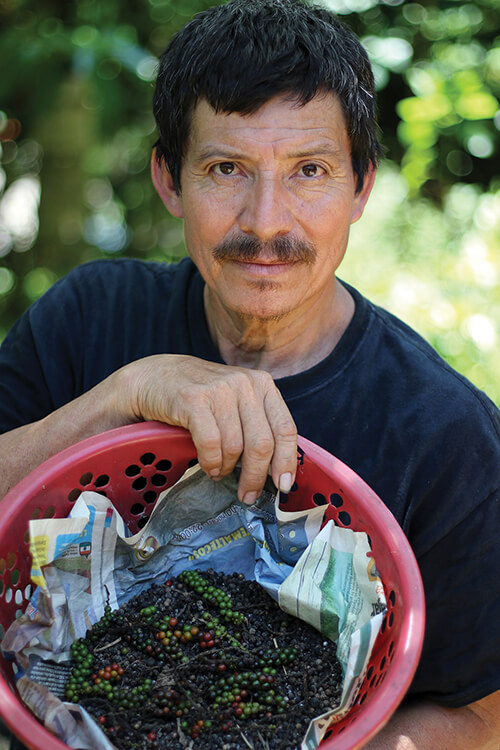 “We call him the Guatemalan King of Black Pepper,” jokes Marco Cerezo, President of Fundación para el Ecodesarrollo y la Conservación (FUNDAECO), which translates to the Foundation for Ecodevelopment and Conservation. “He has put three daughters through college, all on the proceeds from his pepper vines.”
“We call him the Guatemalan King of Black Pepper,” jokes Marco Cerezo, President of Fundación para el Ecodesarrollo y la Conservación (FUNDAECO), which translates to the Foundation for Ecodevelopment and Conservation. “He has put three daughters through college, all on the proceeds from his pepper vines.”
Don Francisco is one of many local landowners who are experimenting with a more bird-friendly approach to agriculture with the help of FUNDAECO and ABC in the Conservation Coast region of Guatemala — a stretch of land that covers approximately one million acres from the country's Caribbean shoreline to the Izabal Department hills farther inland. His success is among the first for ABC's ambitious new approach to saving migratory birds, BirdScapes.
How to Save What Won't Hold Still
Far to the north, in a climate that wouldn't begin to support black pepper, Wood Thrush build nests, hatch eggs, and fledge chicks in the mature forest of Pennsylvania's Appalachian Mountains. But once the chicks leave the nest, they and their parents relocate to nearby stands of dense, scrubby habitat known as “young forest” to forage.
“Right there, you see how we can't just think about a single site,” ABC's Migratory Bird Program Director, Andrew Rothman, says. “The birds need two kinds of habitat — mature forest, with young forest nearby. So we have to think about how these sites interact. We need to think about this at a bigger scale.”
Wood Thrush move between habitats on their nesting grounds. That relatively local movement is challenge enough for bird conservation. But when their full lifespans are considered, they and other migratory birds inhabit an almost incomprehensible amount of territory. Some species travel more than 4,000 miles each way in their twice-yearly migrations.
In addition to healthy habitat at both ends of that journey, the birds also require well-preserved “rest stops” during their travels. Some of these stopover habitats provide shelter and fuel for more than 200 species of migratory birds.
Sign up for ABC's eNews to learn how you can help protect birds
This is the origin story for BirdScapes, ABC's newly launched answer to the essential question of migratory bird conservation: How do we save something with a range that potentially spans continents and may cross a dozen or more international borders? Put another way: How do we save migratory birds when they just won't hold still?
The solution, explains ABC President Mike Parr, is to be selective. “Migratory birds are in all kinds of habitats. They're in agricultural areas. They're in the surrounding forest. They're almost everywhere. We can't properly conserve them by setting up small reserves, but we can't protect absolutely every acre either. We have to define landscapes that are big enough to make a difference, but manageable enough that we can deliver conservation and make change happen.”
This is the founding idea behind BirdScapes: Make them large enough to matter, but small enough to allow for effective conservation action.
Defining BirdScapes
What, exactly, is a BirdScape? Put simply, BirdScapes are large-scale priority areas for habitat management to support the conservation of migratory birds. A single BirdScape could cover 150,000 to 2.5 million acres. It might include several habitat restoration projects, extensive working lands, and a handful of protected areas.
Like a watershed, a BirdScape is a landscape-level classification of habitat, and it may include whole towns and counties within its borders. But while watersheds are defined by the downhill and downstream flow of water, BirdScapes are defined first by the seasonal migration of birds.
Depending upon the regional threats to birds, a BirdScape's conservation plan may call for planting trees, removing invasive species, or working with local farmers and landowners to establish more bird-friendly land-use practices. For example, in grassland areas this might include the implementation of ranching practices that support a diversity of grass heights through rotational grazing; financial incentives for bird-friendly herd management strategies; and the use of fencing and supplemental water sources to reduce impacts on streams and riparian habitats.
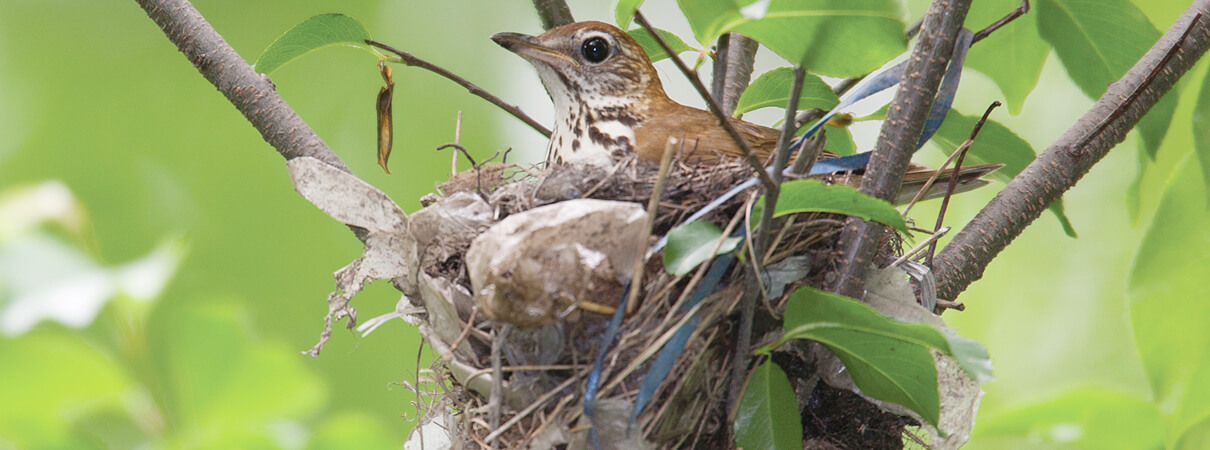
Wood Thrush prefer to build their nests in mature forests, such as what can be found in Pennsylvania's Poconos BirdScape. Photo by Michael Stubblefield
“You can think of a BirdScape as a way of delivering a project across a landscape,” says Parr, who explains that the borders of each individual BirdScape are drawn with pragmatism and compromise.
The designation of a BirdScape begins with the birds, but it does not end there. In addition to the birds' habitat needs, ABC considers the location of existing and potential partner organizations — an essential ingredient for success — as well as the ability to effectively implement conservation projects in the region.
“It's the junction of science and opportunity,” says Parr.
Evolution of Migratory Bird Conservation
BirdScapes build upon similar approaches that have already been proven successful, many of which ABC already supports as a partner. For example, the USDA's Natural Resources Conservation Service — often in partnership with the National Fish and Wildlife Foundation — has already designated multiple areas for habitat management of priority species. Likewise, the Commission for Environmental Conservation — a trinational intergovernmental organization that unites Canada, the United States, and Mexico on continent-wide conservation issues — helps prioritize landscapes for conservation through its Grassland Priority Conservation Areas project.
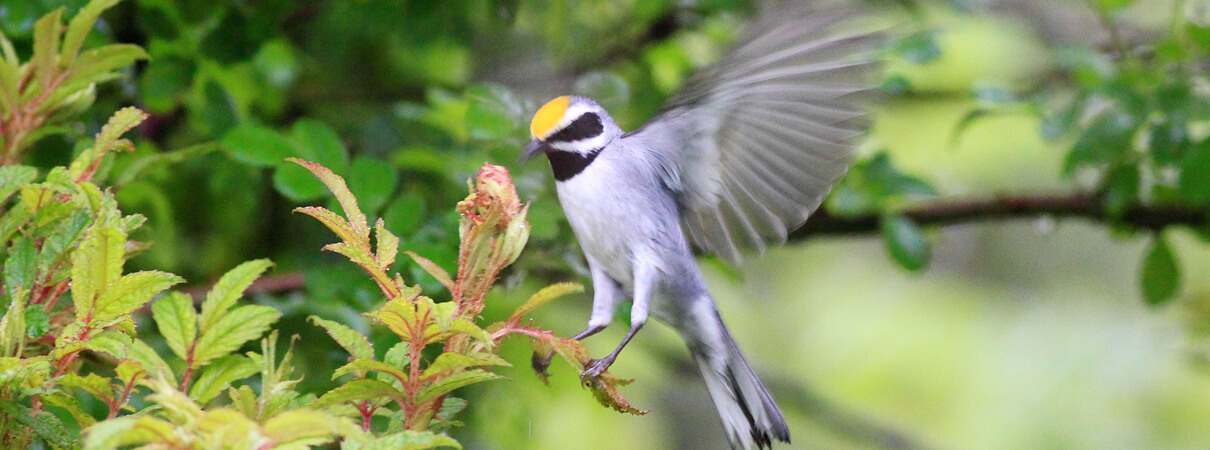
Migratory birds, such as this Golden-winged Warbler, rely on healthy habitat in multiple places throughout the year. This requirement is one of the reasons behind the creation of ABC's new BirdScapes approach to habitat management and conservation. Photo by Bruce Beehler
In the northern Great Plains, the Northern Great Plains Joint Venture and partners are collaborating to keep large swaths of grassland protected from agricultural development. And in Latin America and the Caribbean, the World Resources Institute is actively working to protect 20 million hectares by 2020 through its Initiative 20×20.
Even within ABC, many of the pieces that make up BirdScapes have been in place for some time. In fact, all of the currently active BirdScapes are set around areas where ABC has existing partnerships and projects. BirdScapes formalizes those programs and unites them in a hemisphere-wide approach that has already proven itself successful on a local scale.
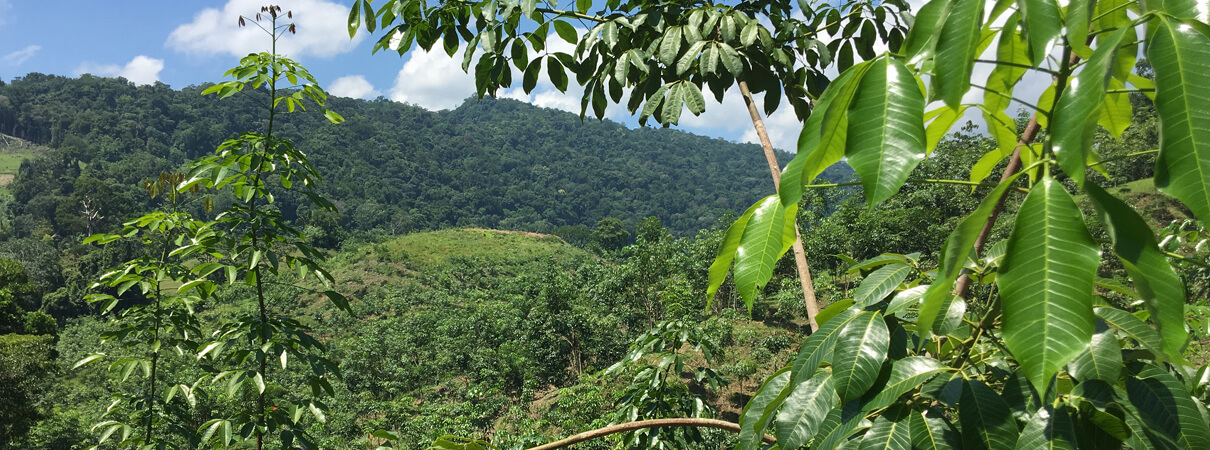
The Conservation Coast BirdScape in Guatemala includes bird friendly cacao plantations — shown here — as well as other forms of forest-based farmed, known as agroforestry. Photo by Mike Parr
“We're confident this is a good thing precisely because it is based on tried and true approaches,” explains EJ Williams, ABC Vice President for Migratory Birds and Habitats. “This is built on 20 years of work with migratory birds.”
But while many of BirdScapes' tactics have been in place for years, the overall strategy — protect migratory birds throughout their full life-cycles, and especially on their wintering grounds — is new for both ABC and bird conservation overall. “This is very much an evolution that's taking us from site-based habitat conservation to habitat conservation on a large scale across the landscape,” says Williams.
From Maps to Boots-on-the-Ground
Guatemala's Conservation Coast is one of the two dozen or so active BirdScapes. Here, ABC and lead partner FUNDAECO are working with landowners to implement forest-friendly agriculture. Agroforestry is no substitute for wild, primary forest, but it supports significantly more wildlife than crops often grown as monocultures, such as corn, oil palm, and sugar cane.
Shade-grown coffee supports is a well-known example of bird-friendly agroforestry, but ABC and FUNDAECO believe crops such as cacao, cardamom, rubber, black pepper, and sustainable timber also have potential to generate income for landowners and habitat for birds. Already, some local landowners — such as the Guatemalan King of Pepper — are benefiting from these new practices, which often bring a price premium at the market while restoring viable habitat for birds in the forests.
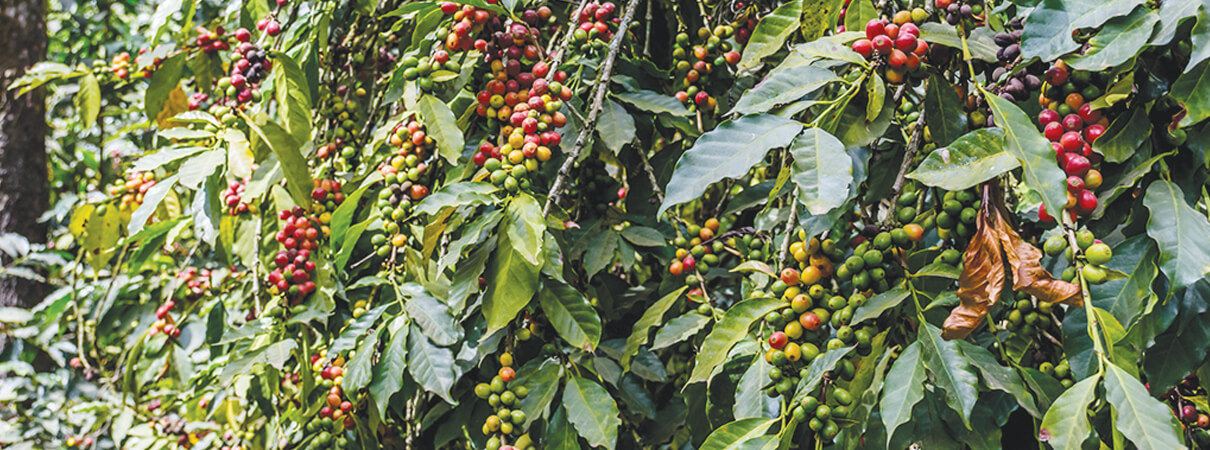
Shade-grown coffee — shown here — is often considered a bird-friendly form of agroforestry because the coffee plants are grown as understory shrubs under larger trees, all of which helps support birds and the food and shelter they rely upon. Agroforestry is one of many conservation tools currently employed within ABC's BirdScapes locations. Photo by loca4motion / Shutterstock
But, these successes — in Guatemala and at other BirdScape locations — do not start in the forest. Rather, explains Parr, they begin with a map. “First, we set a boundary. It's based on a combination of bird data, topographic and political boundaries, and existing protected areas.” Then, once the BirdScape is defined in broad terms, the partners work together to create a land-use plan that accounts for the needs of all its stakeholders — landowners and birds alike.
Not every acre within a BirdScape can be protected, and this is never the goal. To identify priority areas for conservation action, ABC and partners first disregard areas that are already well protected and do not require additional conservation efforts. Then, they eliminate the areas that are already too far gone, such as cities and towns and urban centers that are paved over and fully developed. The remaining landscape — that which is neither fully protected nor fully developed — is where ABC and partners focus their efforts.
“You take the data that you have, and you look to see where you can make the most positive change for birds,” says Parr.
In this manner, ABC and FUNDAECO are defining priority areas within Guatemala's Conservation Coast BirdScape. At the same time, they're putting conservation efforts on the ground. Some lands will be set aside as demonstration sites for bird-friendly agriculture, such as shade-grown cardamom, cacao, and black pepper. Elsewhere, the partners will work with interested landowners to change over annual crops to sustainable agroforestry. And in some cases, ABC and FUNDAECO hope to unite landowners into cooperatives that might attract outside investment for crops that require years to fully develop.
“Even cacao takes several years before it starts to return any kind of proceeds,” Parr explains. “So, if you're a landowner, are you going to plant cacao? Or are you going to go with corn, which you can plant this year and get money out of this year?”
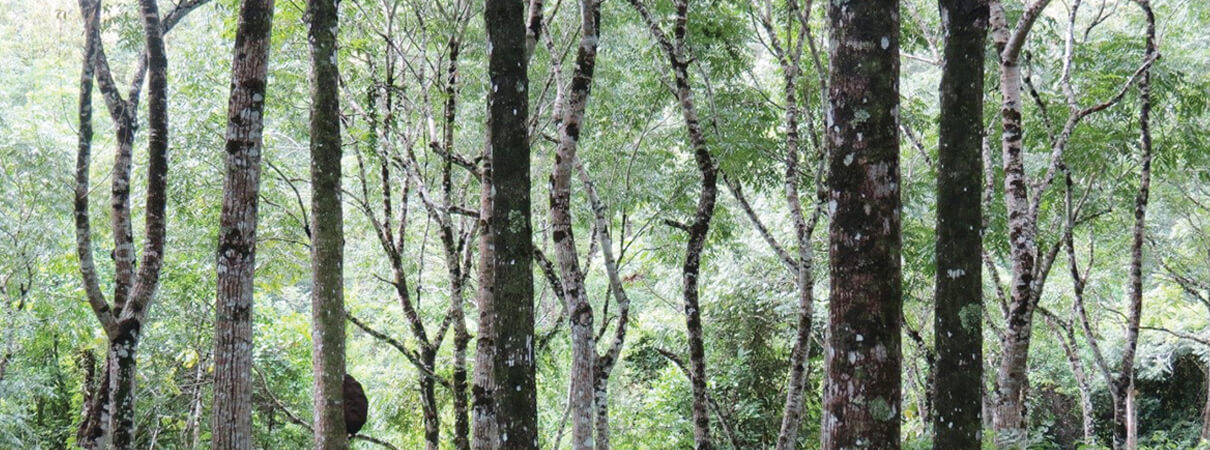
Outside investors may be able to help local farmers and property owners establish slow-growing but bird-friendly crops, such as this hardwood plantation in Guatemala. Photo by Jason Berry
By bringing in outside investors, ABC and FUNDAECO hope to make it possible for landowners to plant high-returning but slow-yielding crops, such as cacao, rubber, and sustainable timber. “We're trying to identify large enough amounts of production that might appeal to investors as a way to get non-philanthropic dollars invested in conservation and the production of more bird-friendly products,” says Rothman. “So, if we package together a large number of acres of long-term, sustainably managed timber production with, say, cacao underneath it, we may be able to engage fund managers who are looking for environmentally friendly products to serve their environmentally conscious members or investors.”
This is one of the potential advantages for BirdScapes. By working at such a large scale, ABC hopes to implement conservation solutions — such as investor-supported sustainable timber production — that would simply not be possible if attempted one property or landowner at a time. Likewise, BirdScapes allow ABC and our partners to find economies of scale, attract new funders and donors, and better share tactics and strategies across landscapes and continents.
“We will learn from each one as we go,” Rothman says. “But I think there are some baseline concepts that apply broadly, such as influencing land use and doing so in a way that's going to be more beneficial to birds while also meeting the economic needs of local people. How that actually is done, I think, will vary from one BirdScape to another.”
Twenty-one of those BirdScapes have already been identified — including the Poconos BirdScape in Pennsylvania where Wood Thrush raise their young and where the idea for BirdScapes first took flight. These same Wood Thrush may winter on Guatemala's Conservation Coast, in the trees that support the shade-grown vines that have made one man a de facto king of black pepper. More — many more — BirdScapes will be added in the years to come.
ABC's conservation efforts at the Guatemala Conservation Coast BirdScape are made possible thanks to the generous support of the March Conservation Fund through the Latin American Reserve Stewardship Initiative, and also from the Jeniam Foundation.
 Cristina Santiestevan is an independent writer and editor committed to sharing stories about nature and conservation in today's world. She has written about the ecology of gardens, the myriad impacts of climate change and habitat loss, and the surprising conservation value of whale poop. Visit her blog at outlawgarden.com.
Cristina Santiestevan is an independent writer and editor committed to sharing stories about nature and conservation in today's world. She has written about the ecology of gardens, the myriad impacts of climate change and habitat loss, and the surprising conservation value of whale poop. Visit her blog at outlawgarden.com.


















































